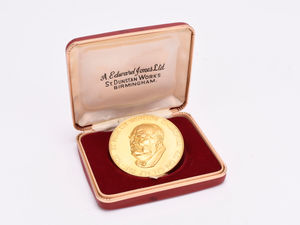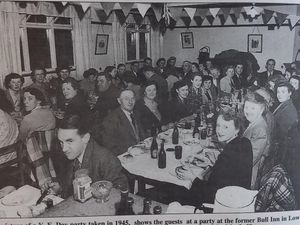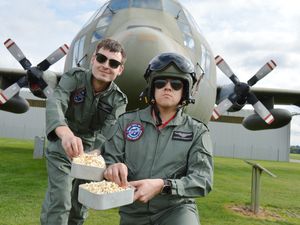60 years since Yuri Gagarin took us out of this world and started the space race
In April 1961, the Cold War between the East and the West was reaching fever pitch. The US-backed attempted invasion of Cuba was days away. Four months later the Berlin Wall would draw an Iron Curtain across Europe.

So try to imagine what would have been going through the minds of the elderly farmer and her grand-daughter in a remote outpost of south-west Russia who watched in disbelief as first, a 7ft metal capsule crashes violently to the ground, followed a few minutes later by the arrival of a man in a silver suit who claimed to have come from outer space.
"I told them, don't be afraid, I am a Soviet like you, who has descended from space and I must find a telephone to call Moscow," Yuri Gagarin wrote in his logbook following the strange encounter.
It is 60 years this week since Yuri Gagarin shocked – and rocked – the world by becoming the first man to travel to outer space. His mission lasted just and hour and 48 minutes – about the length of a football match, allowing for half-time and stoppages – but its significance is hard to overstate. It fired the starting gun in the 'space race' which dominated the 1960s, culminating with Neil Armstrong's walk on the moon in 1969.
As was the custom in the paranoid world of the Soviet Union, the mission was kept top secret until it had been completed, to avoid the possible humiliation of failure. Had the mission failed, Gagarin would not be heard of again. But once he had safely returned to earth, the Communist propaganda machine was free to let rip.
Congratulating Gagarin on his mission, Soviet leader Nikita Khrushchev said: "The flight made by you opens up a new page in the history of mankind in its conquest of space."
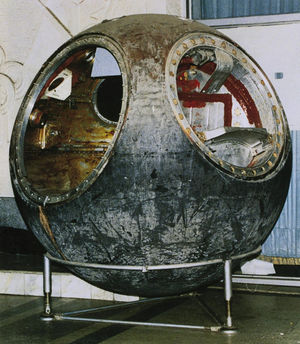

Officially, the Americans were magnanimous in defeat. President John F Kennedy sent a telegram congratulating the Soviets on their achievement, but privately the US authorities were seething. A Nasa report on Gagarin's accomplishment made no bones about the embarrassment felt in the US.
"About 4am, telephones began buzzing up and down the east coast of the United States as reporters demanded responses from Nasa officials," it said.
"John A 'Shorty' Powers half-consciously replied to his first inquisitor, 'We're all asleep down here'." Which resulted in the headline later that day: "Soviets put man in space: Spokesman says US asleep."
And 27-year-old Gagarin was the perfect poster boy for the media onslaught that followed. His back story as the son of a carpenter, forced out of the family home during the Nazi occupation, who went on to sabotage the German war effort, was milked for all it was worth. It was said that two major factors influenced his selection for the mission – his height and his smile.
During the search for the world's first astronaut, the Soviet authorities wanted a skilled and experienced pilot, one who would be able to cope with the pressure of venturing where no man had gone before. But above all that, he needed to be short.

The first expedition to outer space took place in the tiny Vostok 1 capsule, a spherical vessel just over 7ft 6in in diameter, and chief engineer Sergei Korolev required that the candidates must be no more than 5ft 7in tall, and weigh no more than 11st 5lbs. At just 5ft 2in, Gagarin was the perfect height to fit into Vostok, but the other thing that set him apart from the other contenders was said to be his disarming smile.
His charming, engaging personality, was said to be capable of melting even the sternest, most hard-nosed Communist Party hard men, and this would prove invaluable when it came to improving the image of the Soviet regime around the world.
Three months after his flight, he was welcomed to Britain where he was given a hero's welcome, greeted by both the Queen and Prime Minister Harold Macmillan. Gurbir Singh, whose book A Smile That Changed the World looks back at the visit, reveals the frantic efforts going on behind the scenes to strike a balance between congratulating Gagarin on his achievement, without playing into the hands of the Soviet propaganda machine.
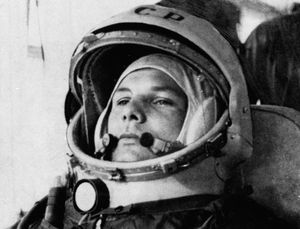
"This unassuming diminutive major with an engaging permanent smile brought hope to a world at the brink of thermonuclear war," says Singh.
"For many in Britain during the coldest days of the Cold War, this cosmonaut was the only Russian they would ever see."
Gagarin's visit came not at the invitation of the British Government, but was rather an opportunistic publicity stunt by the Soviet authorities which announced he would be attending a trade fair at Earls Court. Official invitations were then hastily organised to coincide with the trip, and the Amalgamated Union of Foundry Workers – which realised that Gagarin had been a foundryman before joining the Soviet air force – invited him to extend his stay with a trip to Manchester.
Despite the customary torrential rain which accompanied his visit to Manchester, Gagarin insisted on passing through the streets of the city in an open-topped car, without even an umbrella for protection. On arrival at the union's headquarters, he waved from the balcony to the crowds outside, who greeted him like a member of the royal family.
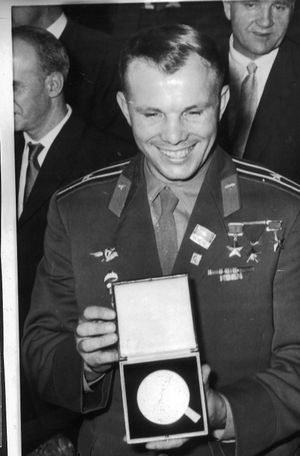
Singh says: "He had experienced something no one else had experienced. Apart from the speed and altitude records he achieved, he'd also experienced a realm – space, micro-gravity, weightlessness – something no one had ever experienced, and for a few months, no one else would experience."
But his success as an ambassador for the Soviet Union also spelled the end of his career as an astronaut. It was said that his importance as a public-relations man meant his life was too valuable to risk in another space expedition, something which left him greatly disappointed.
Yet weirdly, his life would end in mysterious circumstances just seven years later. On March 27, 1968, while on a routine training flight, Gagarin and flight instructor Vladimir Seryogin were killed when their MiG-15UTI crashed near the town of Kirzhach. He was just 34.
As was the way, the Soviet authorities closed ranks and the cause of his death has never categorically been identified. An investigation by the KGB, which remained classified until 2003, blamed air traffic controllers for issuing him with out-of-date weather reports. But conspiracy theories were also rife that he was killed on the orders of Soviet leader Leonid Brezhnev, who was said to be resentful of Gagarin's celebrity status.
Whatever the causes of his death, there is no doubt about the impact his flight had on the world. Next week, Nasa hopes to cross another frontier by launching the first helicopter flight from Mars. The Cold War may have thawed a little, but the space race is here to stay.

